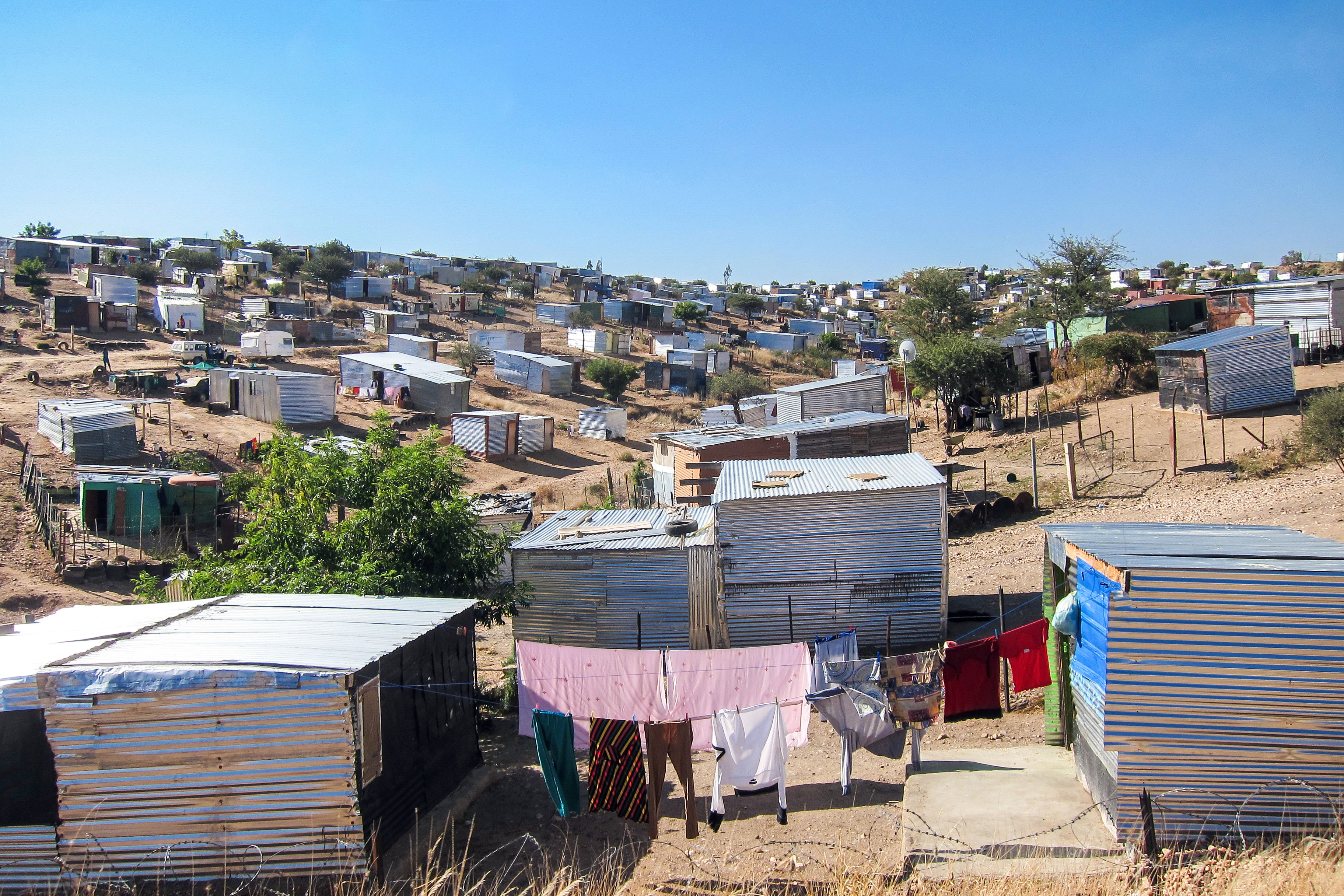An informal settlement near Windhoek
Copyright© jbdodane, via flickr, CC BY-NC 2.0
Core area “Climate and energy, just transition” Decent living conditions in growing cities
Currently, urbanisation in Namibia is chiefly taking place through the expansion and densification of informal settlements. Inhabitants have no secure land rights and are living in extremely poor conditions. The lack of sewage and waste disposal systems is increasingly causing health problems, and crime rates are high.
According to current estimates, over 900,000 of the country’s 2.5 million inhabitants are living in around 230 informal settlements. By 2030, two million people could be living in poor urban areas, and corrugated iron huts could be the country’s most common form of dwelling.
German activities
In response to the urgent need for action, German development cooperation activities are focused on promoting sustainable and inclusive urban development. Engagement by local citizens, experts from different disciplines and local authorities is being combined to transform informal settlements into liveable urban neighbourhoods. The aim of inclusive settlement planning is to tangibly improve housing and living conditions for low-income households and access to secure land rights.
Germany is supporting five partner cities which are home to almost half of all those living in informal settlements in Namibia. An initial phase intends to grant land titles to at least 5,000 households by 2023. This gives them legal certainty and means that they can invest in their land and their homes. Technical and social infrastructure will be restored or established for at least 6,000 households.
The BMZ is also fostering the expansion of renewable energy in Namibia.
As at: 27/05/2022
